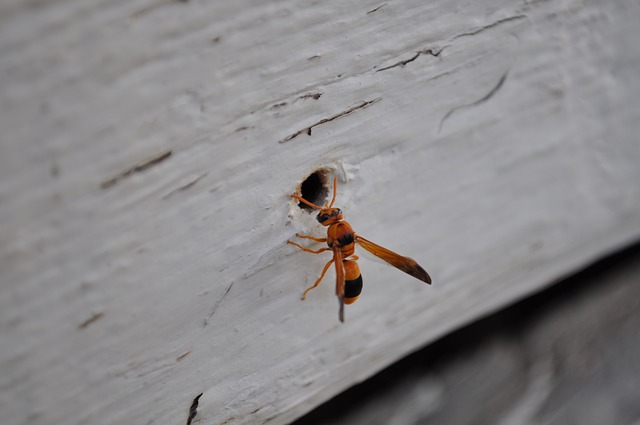Causes and Control of Wood Decay, Degradation, and Stain

Our society depends on wood for a variety of uses. As population increases, so does our need for wood. Steel, concrete and aluminum are some alternatives to treated wood in certain applications, but they have higher material costs, higher energy requirements in the production process, greater air and water pollution or environmental protection costs, and greater dependency on foreign sources for materials.
Substitute materials may not be appropriate for some uses. For example, some types of steel may corrode; concrete may deteriorate in salt water; and plastic may not have the necessary strength, durability and structural integrity. Wood is a renewable natural resource that, if properly treated, maintained and placed in service, will last indefinitely. It is critical for us to use our wood resource efficiently.
This publication is intended to increase your knowledge of the causes and control of wood decay, degradation and stain. A common cause for replacing wood structures is decay or degradation. Wood decay and most insect problems can be prevented for years by properly using and protecting wood. The heartwood of some species, such as black locust and Osage orange, also has a unique chemical composition that makes it very durable.
Two common terms used to describe wood features are heartwood and sapwood. Heartwood is wood in the inner section of a log and is entirely composed of dead cells. This region has a higher concentration of extractives (phenolic-based compounds that make heartwood more decay resistant than sapwood). Sapwood is wood near the bark and is often lighter in color than heartwood. Nutrient translocation occurs only in sapwood. Although most wood species can be treated with a preservative, certain species are considered difficult to treat because of their permeability and anatomical features. Douglas fir, a western species, has below-average permeability and is classified as difficult to treat. Species such as white oak have inclusions in the vessels called tyloses. These inclusions also decrease permeability and make treating more difficult. In general, lumber that has a high percentage of heartwood or is improperly seasoned will be more difficult to pressure treat. Southern yellow pine (SYP) characteristics make it useful for many applications and easily treatable. Most pressure-treated lumber in the South is Southern yellow pine.
Moisture
It is commonly believed that wood shrinks as it loses moisture and swells as it gains moisture. This is partially true. Actually, wood will change dimension only between two precise moisture conditions. One condition is when the wood is void of moisture. This is termed the ovendry condition. The second condition is when the wood fibers are saturated with moisture. This point usually occurs at about 30 percent moisture content for most Louisiana species. As wood is dried from an original green condition, sometimes more than 100 percent moisture content, moisture is first lost from the cell cavities. No shrinkage will occur until the wood reduces to a moisture content of about 30 percent (fiber saturation point). If drying continues below 30 percent moisture content, water is removed from the cell walls and shrinkage occurs. The amount of shrinkage or swelling depends on the species, density and board direction.
Pressure treatment with waterborne preservatives raises the moisture content above the fiber saturation point, and shrinkage will occur as the wood dries down to its in-service moisture content. In many applications, such as deck boards, this shrinkage is not a major concern. When dimensional stability is critical, it is imperative that the lumber be kiln dried after treatment (KDAT). Any KDAT lumber you buy should be kept under a roof or at least under cover and off the ground.
To read more please visit our publication: Causes and Control of Wood Decay, Degradation & Stain
Meet the Author
Dr. Todd Shupe is the President of Wood Science Consulting, LLC. He is a well-recognized expert on wood forensics, wood preservation, wood decay and degradation, and wood species identification. He has a broad background in new product development, quality management, and marketing and sales in both the public and private sectors. For more information please visit DrToddShupe.com.
We welcome your comments below.
Thank you for visiting. We trust that you have enjoyed reading our articles.
Liked this post? Read more below or search for more topics . . .

